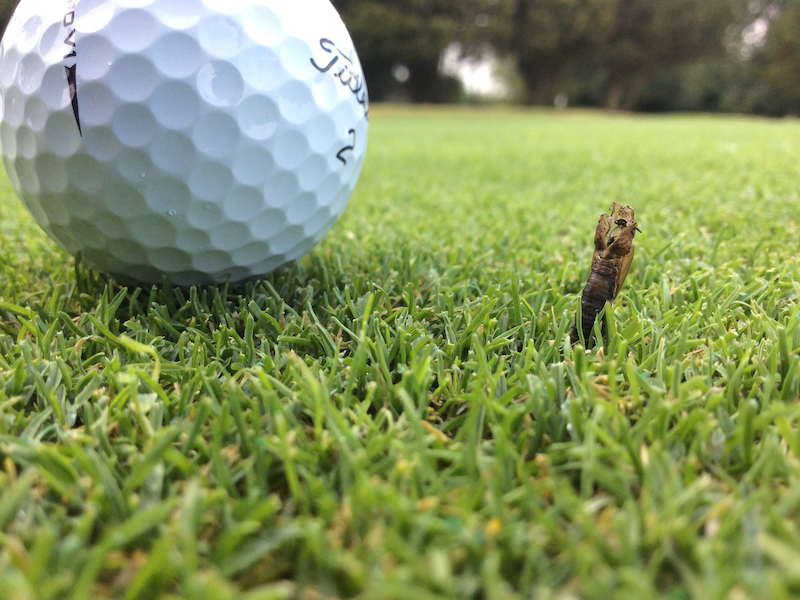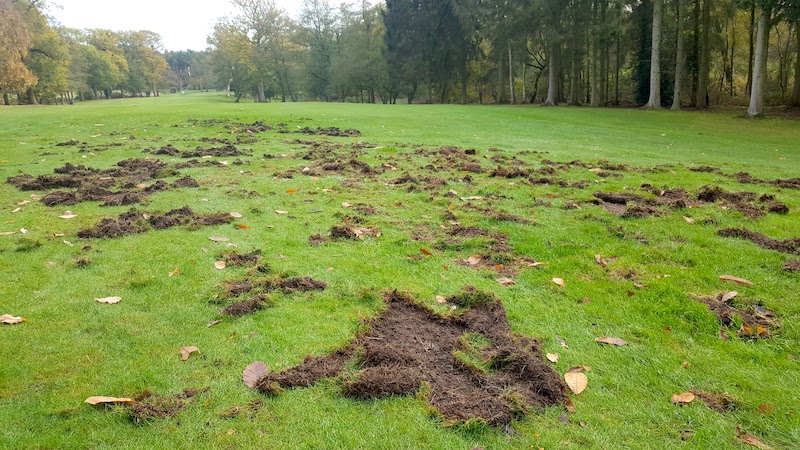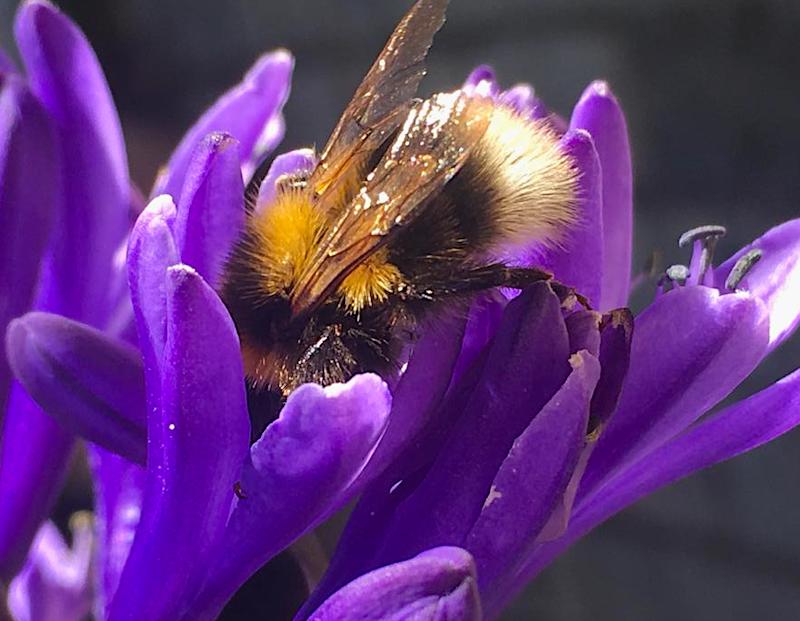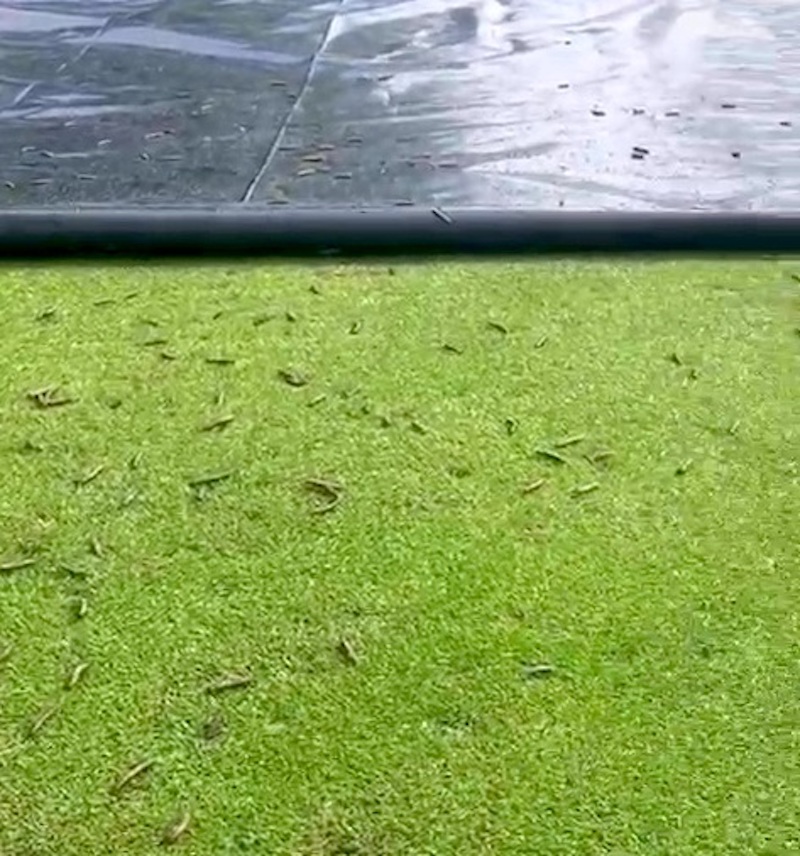What Are Leatherjackets And Why Are They A Problem For Golf?
Leatherjackets can be bad news for golf courses? What but are leatherjackets and why have they become more of an issue for greenkeepers?

What are leatherjackets and why are they a problem for golf?
You may have heard greenkeepers or others at your club talking about the issue of leatherjackets. But what are leatherjackets and what problems do they cause on golf courses?
Well, they’re one of the top topics of conversation in the greenkeeping world.
Leatherjackets are the larvae of crane fly or daddy longlegs. These creatures have a very short lifespan and are quick-breeding, typically hatching in late August or September. Different species hatch at different times of year, though – some in May, for example.

Leatherjackets living beneath greens can seriously damage the putting surface (Photo: courtesy of STRI)
Once hatched, they’re on the wing, with their sole purpose to find a mate. Leave your patio doors open in late summer or early autumn at your peril!
They put their eggs into the ground, with the grubs or larvae feeding on grass and leaves until pupating and eventually re-emerging.

Leatherjackets or crane fly larvae live in the soil (Photo: courtesy of STRI)
How do they impact on golf courses?
The problem for golf courses comes during the period when the larvae are in the ground. They feed on grass roots during the day, but also come to the surface on damp evenings to feed on leaf tissue.
When this occurs on a green, all that movement up, down and out of the soil can leave a very pitted and bumpy putting surfaces. That’s problem number one for golfers.

Greens can end up looking like they’ve been hollow-tined very irregularly
Problem number two is that they are also a desirable tasty treat for birds and other foraging animals. They know that the leatherjackets lurk not very far beneath the surface!
Crows in particular are experts at pecking them out. But bigger creatures like badgers can also get involved, which can do considerable damage to the turf. They’re not overly bothered about the impact on your playing surfaces in their desire for a good feed.

When birds and animals start foraging for leatherjackets, the damage can be significant
Why is it more of a problem now for golfers than before?
There are two main reasons, according to Paul Woodham, general manager of agronomy at STRI (Sports Turf Research Institute).
“With climate change etc, we don’t seem to get the very cold winters that kill these bugs, so we’re seeing higher populations. And, critically for sports turf and golf, the insecticide that was previously used at low cost to treat these things (Chlorpyrifos) was taken off the market in 2016, and for good reason, because of its damage to the environment.
“There is now only one preventative insecticide. But it can only be used with emergency approval so it’s not widely available and is not as effective as the old one.”
One of the main reasons for the withdrawal of Chlorpyrifos was that it is harmful to pollinators. There is rightly now a real desire to help and promote pollinators rather than do anything to cause them harm.

The banned insecticide for leatherjackets is harmful to pollinators (Photo: Isabelle Ellwood)
“In a recent survey,” Woodham continues, “while disease, particularly common winter diseases, are still the No.1 concern [for greenkeepers], how we deal with pests and certainly leatherjackets is quickly catching up as the cause for greatest concern.”
Managing expectations
So, what can be done? At the moment, precious little, although some clubs are reporting success by putting sheeting over areas to draw the grubs up and collecting them for disposal. But that can be labour-intensive and isn’t guaranteed to remove all leatherjackets in a given area.

Some clubs have reported success by sheeting areas to draw the grubs up
Final word goes to Woodham: “We need to investigate more non-chemical strategies, but more than that, we need to educate the golfers that this is the reality – that it’s not as simple as the old chemicals.
“Gone are those days and rightly so, but it’s hard with golfer expectations getting higher and higher. We have to accept that things may not always be as pristine as we’ve been used to. These areas will recover, but it takes patience and commitment.”
Something worth bearing in mind next time you start mentally drafting a letter of complaint when you’re out on the course and things aren’t quite as ‘just so’ as once they were.
This article What Are Leatherjackets And Why Are They A Problem For Golf? appeared first on Golf Monthly.

